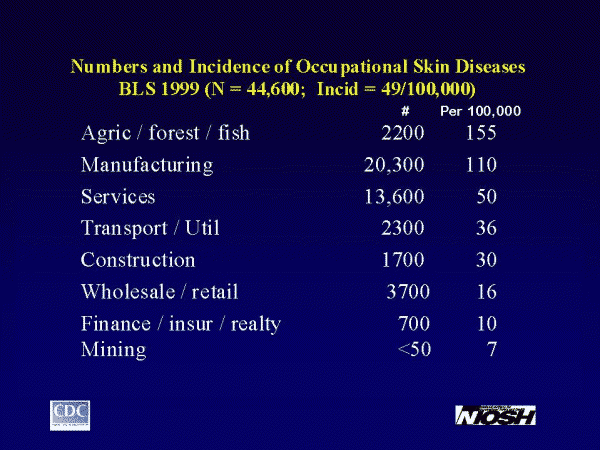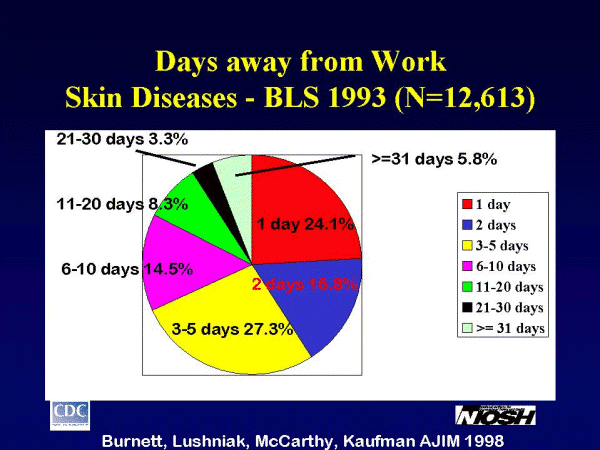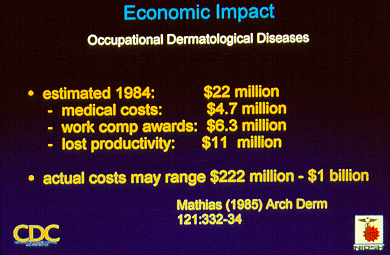Occupational Dermatoses
NOTE: This page is archived for historical purposes and is no longer being maintained or updated.
Slides 6 to 10
Slide 6 - High Risk Industries

Total numbers and incidence rates of occupational dermatologic conditions by major industry division are shown for 1999. The greatest number of cases of occupational skin diseases is seen in manufacturing but the highest incidence rate is seen in agriculture / forestry / fishing.
Slide 7 - Work Time Lost

In 1993, 21% of all occupational skin diseases registered in the BLS survey resulted in days away from work (DAFW) with a median 3 DAFW. Over 17% of cases had over 11 DAFW.
Slide 8 - Costs

The economic impact of a disease can be measured by the direct costs of medical care and workers' compensation (WC) or disability payments, and the indirect costs associated with lost workdays and loss of productivity. An analysis of 1984 U.S. occupational skin disease data estimated annual medical costs of over $4.7 million ($67 per case) and WC claim awards of over $6.3 million ($1590 per case). Based upon this data, the estimated annual indirect cost of lost productivity due to occupational skin diseases in 1984 was $11 million ($700 per case). In 1984 the estimated annual direct and indirect costs exceeded $22 million. However, considering that the actual annual incidence figures may be 10-50 times greater than reported in the BLS data, the total annual cost of occupational skin diseases may range from $222 million to $1 billion. These estimates do not include costs of occupational retraining or costs attributable to the effects on the quality of life.
Slide 9 - Large Plant

It is interesting to note that only 1/3 of America's work force is employed in large plants like this one where there is greater likelihood of a comprehensive occupational health program. Some of these programs, however, are more safety oriented and may not be designed to include prevention of skin disease.Slide 10 - Small Plant

The remaining 2/3 of the workers are employed in small plants that usually have fewer than 500 workers. It is here that the occupational skin disease rate tends to be highest because they lack comprehensive health care programs. - Page last reviewed: January 5, 1998 (archived document)
- Content source:
- National Institute for Occupational Safety and Health Health Effects Laboratory Division (HELD)


 ShareCompartir
ShareCompartir